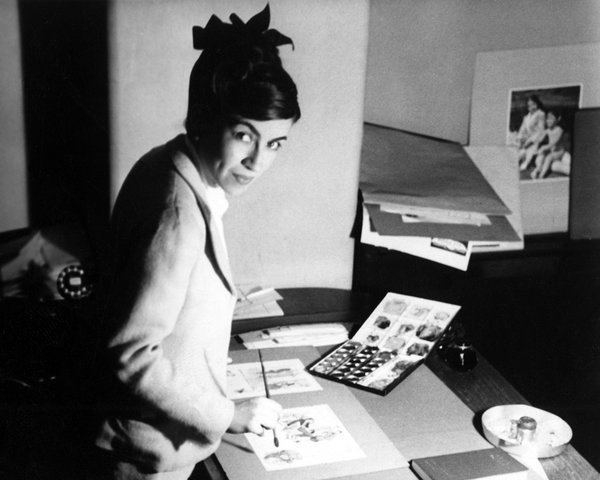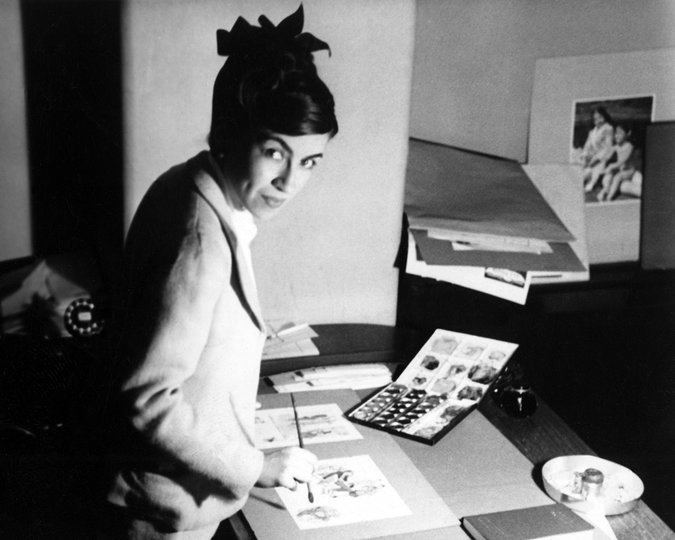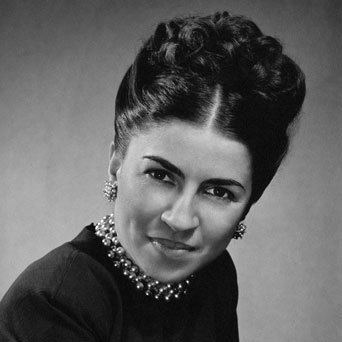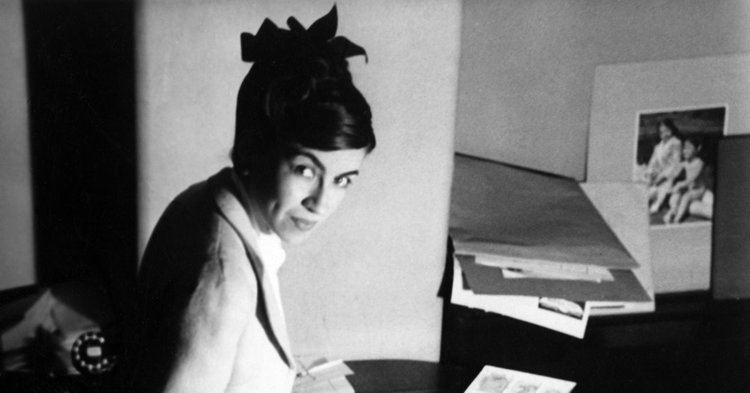Name Sara Turnbull | ||
 | ||
Died September 4, 2015, Seattle, Washington, United States | ||
Sara Little Turnbull (née Finkelstein; September 21, 1917 – September 4, 2015) was an American product designer, design innovator and educator. She advised corporate America on product design for more than 50 years, and has been described as "corporate America's secret weapon." She was one of America's first female industrial designers and one of the first women to succeed in a post-World War II design industry dominated by men. She helped to create essential products from medical masks to CorningWare, and founded and led the Process of Change: Laboratory for Innovation and Design at the Stanford Graduate School of Business. She approached design as a self-trained cultural anthropologist and believed that a thorough understanding of the fine-grain details of how different cultures behaved was key to successful and innovative business solutions.
Contents
- Early life and education
- House Beautiful
- Product Design
- Process of Change Laboratory for Innovation and Design
- Teaching Awards and Honors
- Board Service
- References

Early life and education

Sara Finkelstein was born in Manhattan and raised in Brooklyn. Her mother introduced her to the use of color and form by arranging fruits and vegetables in bowls. She attended Parsons School of Design on scholarships from the School Art League of NYC and the National Council of Jewish Women, graduating in 1939.

Because she was 4'11" in height, she acquired the nickname "Little Sara," and then began to call herself Sara Little professionally. She married James R. Turnbull (then executive vice president of Douglas Fir Plywood Assn in Tacoma, WA) in 1965, but used the name Sara Little for her entire career. Later, when Turnbull became executive vice president of National Forest Products Assn, they moved to Washington, D.C., with an apartment at the Watergate complex. They were living there during the White House plumbers break-in.
House Beautiful

After college, Sara Little worked at Marshall Fields as a bench designer and assistant art director, then became art director at Blaker Advertising Agency. She was eventually hired as an editorial assistant at House Beautiful magazine, where she wrote the "Girl with a Future" column until she rose to the position of Decorating Editor, which she held for nearly two decades.

At House Beautiful, she anticipated and helped develop the American post-World War II domestic lifestyle. By asking, "how we could help these people put their lives back together through ideas in our magazine?" she encouraged readers to utilize more informal space in the home (in what eventually became known as the family room), share living space with a roommate, and organize small spaces for maximum domestic efficiency (she lived for 20 years in a 400-square-foot (37 m2) hotel room from which she also ran her international consulting practice).
Product Design

In 1958, Little left the magazine world and formed Sara Little Design Consultant. At the time, she wrote a trade article for Housewares Review entitled "Forgetting the Little Woman" (although she often referred to this article in subsequent interviews as "When Will The Consumer Become Your Customer?"). Her main argument was that most companies created products for retailers, instead of considering the people who were actually going to use them. The story caught the attention of a few prominent CEO's and executives, including the heads of General Mills, 3M and the Corning Glass consumer products division. All three companies eventually hired her as a product research consultant to assist in finding new applications for technologies developed for the war effort. She helped create disposable medical and antipollution masks made from non-woven fibers, nutritious soybean candy, and the ubiquitous freezer-to-oven CorningWare that was developed from a material originally used on missile cones.
During her 65-year design career she provided advice on strategic design, consumer awareness, and cultural change to an international slate of companies such as: Procter & Gamble, Coca-Cola, General Mills, Macy’s, Neiman Marcus, Marks & Spencer, American Can, DuPont, Ford, Nissan, Pfizer, Revlon, Elizabeth Arden, Lever Brothers, Motorola, NASA and Volvo. She consulted on a range of domestic products including housewares, home storage systems, food, counters that cook, microwave cooking products, personal care, medication delivery systems, cosmetics, fabric processes (knit and non-wovens), space suits, furniture, toys, decoration and packaging, household cleaning products, pet care, tapes and adhesives, and car interiors.
Many of her ideas arose from her intense interest in different cultures and the natural world. A self-trained cultural anthropologist, she traveled frequently to destinations such as Borneo, Malaysia, the Philippines, India and Kenya, always on the lookout for how people and animals solved the problems of everyday living. Her design for a pot lid was inspired by observing cheetahs grasping their prey in the wild. “It always starts with a fundamental curiosity,” she said of her quest for innovative product design. “When I can't find the answer in a book, I go out and search for it. The excitement of my life is that I have always jumped into the unknown to find what I needed to know.” In another case, she began the design process for a burglar-proof lock by interviewing thieves in jail.
In 1971, she established the Sara Little Center for Design Research at the Tacoma Art Museum in Washington State to archive and display her collection of over 5,000 artifacts gathered during her travels. The collection includes body coverings and accessories, food preparation and dining implements, textiles, fine and folk art, much of which had influenced her concepts for domestic product design. The collection was deaccessioned from the Tacoma Art Museum in 2003 and is being re-established in Seattle, WA for design scholarship and educational purposes.
Process of Change: Laboratory for Innovation and Design
In 1988, Little founded and for the next 18 years directed the Process of Change: Laboratory for Innovation and Design at the Stanford Graduate School of Business. The Laboratory tracked changing trends in more than 375 areas including education, healthcare, aging, sexuality, food and nutrition, housing, clothing, and manufacturing. Little used this information to fuel her design concepts. "The quality of life of a people dictates what they design, what they make," she said. "It's a reflection of life itself."
In her work with students at Stanford, Little continually emphasized digging deep into the "why" of a product before leaping into the "how," in order to avoid designing products that only addressed superficial symptoms rather than the deeper need. “The designer is the conscience of the company. We can't expect anyone else to fill this role. That’s why the Process of Change Laboratory delineated the need to know more. Design requires a background of scholarship, otherwise it remains a visual trick.”
Teaching, Awards and Honors
In addition to her work at Stanford, Sara Little has been a guest lecturer at schools such as Parsons School of Design, Rhode Island School of Design, MIT, Harvard, Illinois School of Technology, Copenhagen Business School, University of Washington, San Francisco State University and University of California Berkeley.
She received a Distinguished Designer Fellowship from the National Endowment for the Arts in 1988; the Trailblazer Award from the National Home Fashion League (1980), and an honorary doctorate from Academy of Art University (2003). In 2008, Chrysler Corporation established the Chrysler Sara Little Turnbull Scholarship at Academy of Art University. The Modern Art Council of the San Francisco Museum of Modern Art designated her a "Bay Area Living Treasure" in 2001. In 2006, at the age of 89, Sara Little received the Lifetime Achievement Award from Icograda (International Congress of Graphic Design Associations).
